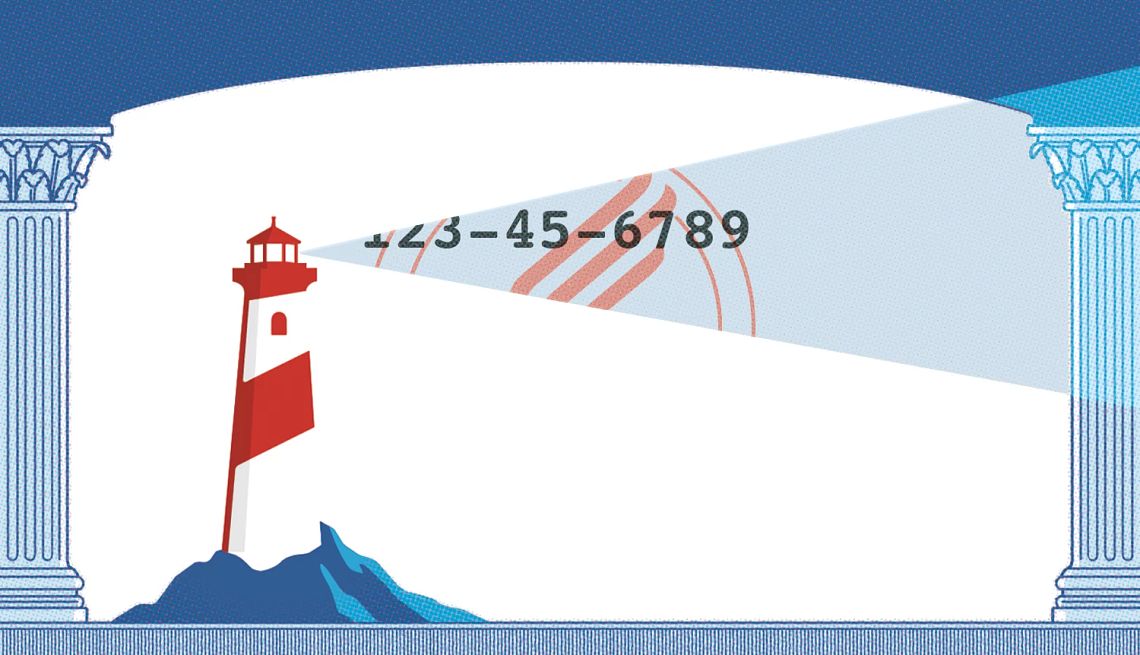
Biggest social security changes for 2025
- Select a language for the TTS:
- UK English Female
- UK English Male
- US English Female
- US English Male
- Australian Female
- Australian Male
- Language selected: (auto detect) - EN
Play all audios:

5. FULL RETIREMENT AGE Full retirement age, or FRA, is the age at which you become eligible to claim 100 percent of the retirement benefit calculated from your lifetime earnings. For the
past several years it has been going up two months at a time, based on year of birth. FRA is 66 years and 8 months for people born in 1958 and 66 and 10 months for those born in 1959; people
born May 2, 1958, through Feb. 28, 1959, will reach it in 2025. (Under current law, it will settle at 67 for people born in 1960 and afterward.) JOIN OUR FIGHT TO PROTECT SOCIAL SECURITY
Sign up to be an AARP activist and tell your lawmakers to protect Social Security for the hardworking Americans who have earned it. Learn more about how AARP is safeguarding Social Security
so it remains strong. You can start collecting retirement benefits before FRA — the minimum age is 62 — but your monthly payment will be permanently reduced, by as much as 30 percent. You
can also wait past FRA and reap Social Security's bonus for delaying benefits: an extra 8 percent a year until age 70, when you can claim your maximum benefit. 6. SOCIAL SECURITY TAXES
Social Security is primarily funded by a 12.4 percent tax on most workers’ earnings. If you earn wages, you pay 6.2 percent (through FICA withholding from your paycheck) and your employer
pays 6.2 percent. Self-employed people pay both shares as part of their annual tax return. The rate has not changed since 1990, but the amount of income subject to it is adjusted annually to
reflect national wage trends. In 2025, you’ll pay the tax on work income up to $176,100 (up from $168,600 in 2024). Earnings above that threshold are not taxed for the purpose of funding
Social Security, nor is any income from investments. 7. SOCIAL SECURITY EARNINGS TEST Social Security applies an earnings test to beneficiaries who have not yet reached full retirement age.
People who collect retirement, survivor or family benefits before reaching that milestone and continue to work may temporarily lose a share of their Social Security benefits if their
earnings exceed a certain level. That threshold changes annually, tracking wage trends. In 2025, beneficiaries who will not reach FRA until a later year have $1 withheld from their Social
Security payment for every $2 in work income above $23,400 (up from $22,320 in 2024). For example, if you earn $40,000 from work in 2025, your benefits for the year would be reduced by
$8,300 — half the difference between $23,400 and $40,000. The earnings test eases in the year you reach FRA: Social Security holds back $1 in benefits for every $3 in earnings above $62,160
(up from $59,520 in 2024) until the month when you hit the milestone. At that point, the test goes away: There’s no longer any benefit deduction, no matter how much you earn, and the SSA
adjusts your monthly payment upward so that, over time, you recoup the prior withholding. There are different income rules for people receiving Social Security Disability Insurance (SSDI).
Because disability benefits are intended for people who are largely unable to work for an extended period due to a serious medical condition, you can lose them if your earnings reflect what
the SSA calls “substantial gainful activity.” In 2025, that threshold is $1,620 a month for most SSDI beneficiaries, a $70 increase from 2024. People receiving SSDI on the basis of blindness
are subject to a higher income limit: $2,700 a month in 2025, $110 more than in 2024. 8. QUALIFYING FOR BENEFITS The first step in qualifying for Social Security retirement benefits is
having at least 40 Social Security credits. You earn credits, or “quarters of coverage” in SSA parlance, by doing work in which you pay Social Security taxes on your income. You can earn up
to four credits a year, so most workers reach the eligibility threshold after 10 years in the labor force. In 2025, you earn one credit for earnings of $1,810 ($80 more than the 2024 level),
so you bank your maximum of four credits when your work income for the year reaches $7,240.
